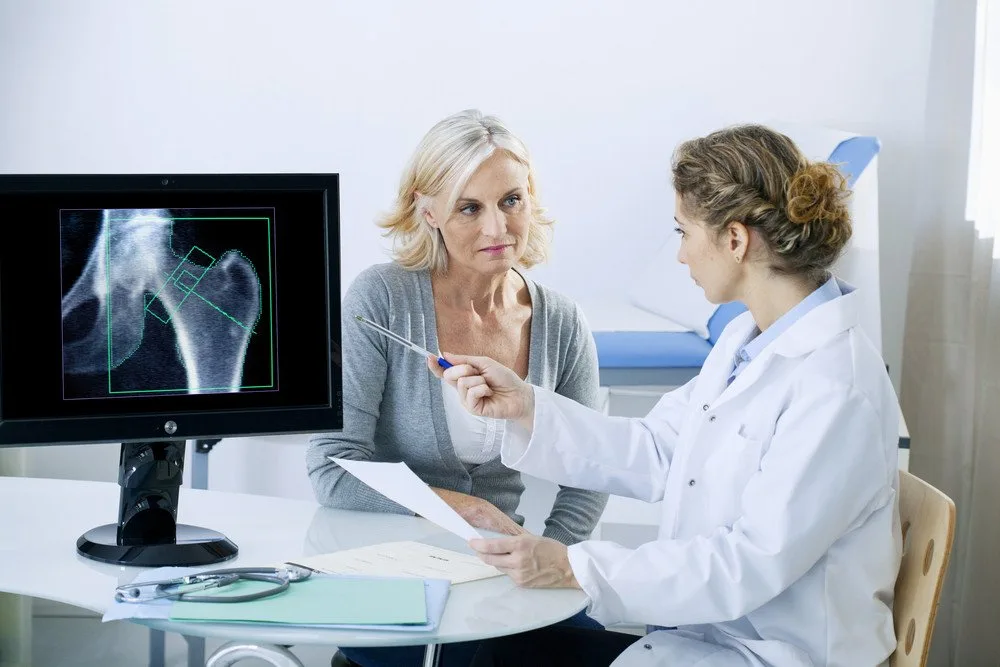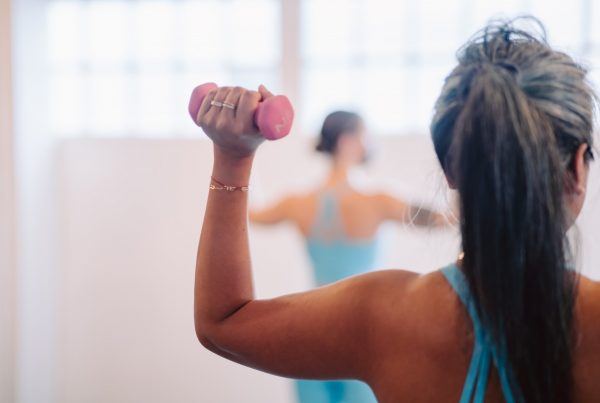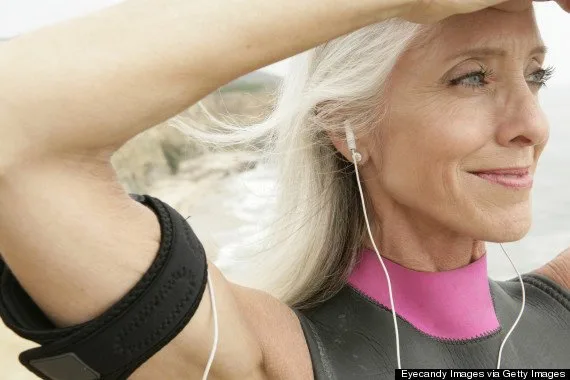Musculoskeletal health is integral for good health and longevity, as it focuses on the well-being of the body’s muscles, bones, joints, ligaments, tendons, and the nerves that connect them. For Dr. Darren Subrayan, a chiropractor, corporate wellness advocate, and passionate health educator, maintaining musculoskeletal health has become an integral part of his day-to-day. In honor of Women’s Month, we explored how the musculoskeletal system affects women as well as which non-surgical and medication-free approaches Dr. Subrayan adopts to assist individuals with severe or even minor back issues.
Osteoporosis: A Woman’s Spinal Disease?
Musculoskeletal health problems can impact all genders; however, women do face a higher risk of certain conditions, most notably osteoporosis.
“With osteoporosis, the bone becomes weaker and less dense, and as a result of that, it’s more brittle and more likely to fracture or break.” – Dr. Subrayan
 Studies have indicated that osteoporosis is two times more common in women than in men, although other studies suggest that men have a higher prevalence of osteoporosis-related complications. Dr. Subrayan notes that one in three females will experience a fracture as a result of osteoporosis at some stage in their life, and this becomes evident in our later years.
Studies have indicated that osteoporosis is two times more common in women than in men, although other studies suggest that men have a higher prevalence of osteoporosis-related complications. Dr. Subrayan notes that one in three females will experience a fracture as a result of osteoporosis at some stage in their life, and this becomes evident in our later years.
“With our elderly grandparents or great-grandparents, we’ll notice that as they fall and as they get older, they often experience hip fractures, lower back fractures, or even wrist fractures,” says Subrayan, “These fractures are generally, not always, but sometimes as a result of osteoporosis and weakening of their bones over time.”
Unfortunately, these fractures can be debilitating and life-changing, so it’s imperative to raise awareness and also highlight preventative measures.
What causes osteoporosis?
Again, osteoporosis is about the weakening of the bones, and according to Subrayan, this can happen for a few reasons, most notably lack of exercise, especially if you’re a ‘working woman’,
“The majority of my patients are executives, corporate individuals who spend most of their day at their desks in front of computers, and they experience neck, shoulder and back discomfort regularly.”
Coupled with a low-calcium diet, low vitamin D intake, and hormonal changes, particularly menopause, it’s not long before people’s bones begin to slowly break down.
Also, osteoporosis isn’t necessarily an elderly disease, with Subrayan suggesting that your risk remains high in your 30s and 40s, especially if you have a family history of osteoporosis.
“Just like if you have a family history of heart disease, you should be looking out for heart-related issues – osteoporosis is no different.”
Managing spinal problems
If you’re struggling with back pain or other spinal issues, you must consult an expert. But should you reach out to a chiropractor like Subrayan, or a physiotherapist?
“We both treat very similar things, but the difference is the approach,” says Subrayan, who shares that spinal manipulation or ‘clicking of the spine’ is his primary modality for treatment. He adds that while a physiotherapist may adopt soft tissue therapy, he believes that chiropractors are more focused on spinal manipulative therapy. Nonetheless, one isn’t better than the other, and it comes down to which style of medicine works better for you.
As for the clicking of the spine, there are a few functional reasons for it.
The first is an increased range of motion, with clicking of the spine not only allowing and improving movement, but also releasing stress or pressure, or even muscle spasms, around that area.
“Adjustments change the way the brain and the body communicate,” says Subrayan, “It affects the nervous system, the spinal cord, and the brain, and allows these two areas to communicate better.”
Now, despite the benefits of spinal manipulation and adjustments, Subrayan cautions other chiropractors to be careful and refrain from hard adjustments.
Keeping your bones healthy
“Spinal health for me means being able to live your life pain-free, without having repercussions down the line.”
To improve spinal health and mobility, Subrayan suggests the following habits:
-
Walking
Unsurprisingly, Subrayan touts walking as the most practical and safest way to improve your spinal health. However, it shouldn’t just be a casual stroll, but rather a “brisk walking, with arms swinging, and it should be done up to, but not past, the point of discomfort.”
-
Low-resistance exercises
Low-resistance exercises, such as swimming, are great for bone health, especially in those with diagnosed osteoporosis, as they help to rebuild bone density and strength.
-
Better office habits
Considering the amount of time we spend at our desks, Subrayan wants us to improve our office habits, referring to it as ‘back hygiene’
“We need to be more aware of our ergonomics and our desk setups, because effectively that’s how we are spending our days, six to eight to ten hours of it.”
Also, corporate life can be quite stressful, and many people are ignorant of how stress can contribute to spinal and back issues. Not only is back pain responsible for 18% of work absenteeism, but employees with chronic back pain are also more likely to be absent from work for more than one month in the previous 12 months. This will impact a company’s bottom line.
As such, Subrayan encourages that we not only maintain our stress levels, but also speak to senior leadership if we’re dealing with spinal aches.
-
Strengthen your core
A weakened core has been associated with back pain, so Subrayan recommends core-stabilizing and strength exercises. These can include bridges, bird dogs, dead bugs, and planks.
-
Get enough calcium
Not getting enough calcium can be bad for your bones, so adding more spinach, kale, collard greens, and bok choy can do wonders for your health.
-
Get enough sun
Vitamin D helps the body absorb calcium, so the right amount of sun exposure, with adequate sun protection, is recommended.
-
Get screened early
Osteoporosis can be an issue of concern for someone in their 30s, so Subrayan recommends screening for bone density within this age group, especially if you have a family history of the disease
A holistic spinal plan
Beyond just spinal manipulations, Subrayan is a chiropractor who helps but also educates his patients,
“There’s not enough cross-pollination. I hope that changes because it will be better for patients in the long run,” he says. He thus advocates for a more integrated approach, whereby a chiropractor can work closely with other medical experts to develop a well-rounded care plan for patients.
Watch The Interview
Your health is your biggest asset, so why not invest in it?
Considering that your spine supports everything you do, it’s imperative that you not wait for a fracture before taking your spinal health seriously.
View this post on Instagram
References
Ali, R., Al-Sudani, H., Hanoodi, M., Tskhakaia, I., Lau, A. and Tan, I. (2024). OP0032 Gender Disparities In Osteoporosis Diagnosis And Management Among Patients With Vertebral Fractures: Insights From A Large-Scale Database Study. Annals of the Rheumatic Diseases, [online] 83, pp.143–144. doi:https://doi.org/10.1136/annrheumdis-2024-eular.1694.
Narla, R. R., & Adler, R. A. (2024). Rationale for osteoporosis screening in men. Osteoporosis International, 36(2), 163. https://doi.org/10.1007/s00198-024-07337-5
Ta, K.-N.T., Bai, C.-H.;Chuang, K.-J. Prevention of Work Absence Due to Back Pain: A Network Meta-Analysis. Eur. J.Investig. Health P sychol. Educ. 2023, 13, 2891–2903. https://doi.org/10.3390/ejihpe13120200



![women [longevity live]](https://longevitylive.com/wp-content/uploads/2020/01/photo-of-women-walking-down-the-street-1116984-100x100.jpg)










